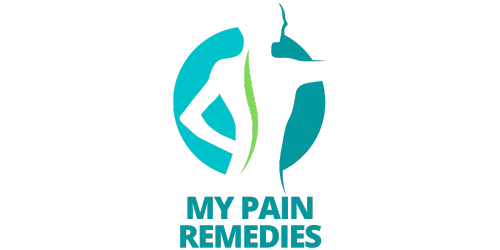Are you suffering from the persistent pain of osteoporosis? If so, you’re not alone. Osteoporosis is a debilitating condition that affects millions of individuals worldwide, causing significant discomfort and limited mobility. However, there is hope. In this article, we will explore the power of natural remedies in relieving osteoporosis pain. By harnessing the healing properties of nature, you can find relief from the daily struggles of this condition without relying solely on medication. Discover the diverse range of natural remedies available and unlock the potential for a pain-free life.

Dietary Changes
Increase calcium intake
To support strong and healthy bones, it’s important to increase your calcium intake. Include foods such as dairy products like milk, yogurt, and cheese, as well as leafy green vegetables like kale and broccoli in your diet. You can also opt for calcium-fortified foods and drinks like orange juice and cereals. Aim for the recommended daily intake of 1000-1300 mg of calcium, depending on your age and gender.
Consume vitamin D-rich foods
Vitamin D plays a vital role in calcium absorption and bone health. Get your daily dose of vitamin D by including foods like fatty fish (salmon, mackerel), egg yolks, and fortified foods (milk, cereal) in your diet. Additionally, spending some time outdoors in the sunlight can help your body naturally produce vitamin D. Remember to consult a healthcare professional to determine your specific vitamin D needs.
Eat foods high in magnesium
Magnesium is another mineral crucial for bone health. Incorporate magnesium-rich foods into your diet, such as nuts and seeds (almonds, pumpkin seeds), legumes (black beans, lentils), and whole grains (quinoa, brown rice). These foods not only provide magnesium but also offer additional nutritional benefits. Aim for a daily intake of around 300-400 mg of magnesium.
Include foods rich in omega-3 fatty acids
Omega-3 fatty acids have anti-inflammatory properties that can help reduce pain associated with osteoporosis. Incorporate foods like fatty fish (salmon, tuna), flaxseeds, chia seeds, and walnuts into your diet to increase your omega-3 intake. Alternatively, you can consider taking omega-3 supplements, but it’s essential to consult with a healthcare professional first.
Avoid caffeine and alcohol
Both caffeine and alcohol can interfere with calcium absorption in the body and contribute to bone loss. Limit your intake of caffeinated beverages like coffee and tea, as well as alcoholic drinks. Opt for alternative options like herbal teas and non-alcoholic beverages to stay hydrated and support your bone health.
Herbal Supplements
Turmeric
Turmeric is known for its anti-inflammatory properties, which can help alleviate pain and inflammation associated with osteoporosis. You can incorporate turmeric into your diet by adding it to your meals or by taking turmeric supplements. Consult with a healthcare professional for the appropriate dosage and any potential interactions with other medications.
Ginger
Ginger also possesses anti-inflammatory properties that can provide relief from osteoporosis-related pain. It can be consumed in various forms, including fresh ginger, ginger tea, or as a supplement. However, it’s important to note that ginger may interact with certain medications, so it’s advisable to consult with a healthcare professional before incorporating it into your routine.
Nettle
Nettle is a herb that has been traditionally used to promote bone health due to its high mineral content. It is available in various forms such as tea, extract, or capsules. Nettle supplements are believed to help reduce pain and inflammation associated with osteoporosis. As always, consult with a healthcare professional before adding nettle to your regimen.
Red clover
Red clover is widely used in herbal medicine due to its potential effects on bone health. It contains compounds called isoflavones, which have been suggested to support bone density. Red clover is available in the form of teas, tinctures, or capsules. However, it is important to discuss with a healthcare professional before using red clover, especially if you have any underlying medical conditions or are taking medications.
Horsetail
Horsetail is an herb that has been used for centuries to promote bone health. It contains silica, a mineral that is believed to support bone strength and density. Horsetail can be consumed as an herbal tea, in supplement form, or applied topically as a poultice. As with all supplements, it is advisable to consult with a healthcare professional before incorporating horsetail into your routine.
Exercise and Physical Therapy
Weight-bearing exercises
Engaging in weight-bearing exercises can help strengthen your bones and improve overall bone density. Activities such as walking, jogging, dancing, or climbing stairs require your bones to support your body weight, encouraging them to become stronger and less prone to fractures.
Resistance training
Incorporating resistance training into your exercise routine can be highly beneficial for bone health. Activities like weightlifting or using resistance bands can help increase muscle mass and bone strength. It’s essential to start with appropriate weights and engage in proper form to avoid injury.
Balance exercises
Balance exercises can help improve stability and reduce the risk of falls. Simple activities like standing on one leg, heel to toe walks, or practicing yoga poses that focus on balance can contribute to better stability and help prevent fractures.
Yoga and Pilates
Yoga and Pilates are low-impact exercises that can improve flexibility, balance, and posture while promoting bone strength. These practices often emphasize proper alignment and controlled movements, which are beneficial for individuals with osteoporosis. However, it’s crucial to consult with a qualified instructor who can provide modifications to accommodate any specific needs or limitations.
Physical therapy techniques
Working with a physical therapist can be highly beneficial for individuals with osteoporosis. They can provide tailored exercises and techniques to improve strength, flexibility, and balance while considering your specific condition. Physical therapy can help you regain mobility and reduce pain, promoting a better quality of life.
Heat and Cold Therapy
Hot packs
Applying hot packs to areas experiencing osteoporosis-related pain can help provide temporary relief. The heat increases blood flow to the area, promoting relaxation and reducing discomfort. Use a hot pack or a heated towel, ensuring that the temperature is comfortable and not too hot to avoid burns.
Cold packs
Cold packs can help numb painful areas and reduce inflammation. Applying a cold pack wrapped in a thin towel or a bag of frozen vegetables to the affected area for about 15-20 minutes can provide temporary relief. Remember to avoid direct contact with the skin to prevent frostbite.
Alternating hot and cold therapy
Some individuals find relief by alternating between hot and cold packs. This contrast therapy can help improve blood circulation and reduce inflammation. Start with a hot pack or a warm towel, then switch to a cold pack after a few minutes. Continue alternating for a total of 15-20 minutes, ending with a cold pack for best results.

Essential Oils
Lavender oil
Lavender oil is renowned for its relaxing properties, and it may help reduce stress and promote restful sleep. Inhaling lavender oil or using it in massage oil can contribute to overall well-being and potentially alleviate pain associated with osteoporosis.
Peppermint oil
Peppermint oil has analgesic and cooling properties, making it an excellent choice for relieving pain. Applying diluted peppermint oil to painful areas or inhaling its scent can provide a soothing sensation and temporary relief from discomfort.
Eucalyptus oil
Eucalyptus oil contains compounds that have anti-inflammatory and analgesic effects. Massaging diluted eucalyptus oil onto the affected areas may help alleviate pain and inflammation associated with osteoporosis.
Rosemary oil
Rosemary oil has been traditionally used for its analgesic properties. A gentle massage with diluted rosemary oil can promote relaxation, relieve muscle tension, and potentially reduce osteoporosis-related pain.
Frankincense oil
Frankincense oil possesses anti-inflammatory properties and has been used for centuries to alleviate pain. Massage diluted frankincense oil into painful areas or inhale its aroma for potential relief.
Acupuncture
Traditional acupuncture
Traditional acupuncture involves the insertion of thin needles into specific points on the body to promote healing and pain relief. It is believed that acupuncture can help balance the body’s energy flow and stimulate the production of natural pain-relieving chemicals.
Electroacupuncture
Electroacupuncture combines traditional acupuncture with a small electric current passed through the needles. This technique can enhance the effects of traditional acupuncture, potentially providing increased pain relief for individuals with osteoporosis.
Auricular acupuncture
Auricular acupuncture focuses on specific points on the ears that are believed to correspond with different parts of the body. Stimulating these points with small needles may help alleviate pain and promote overall well-being.
Lifestyle Changes
Quit smoking
Smoking has been linked to decreased bone density, increased fracture risk, and delayed bone healing. Quitting smoking can benefit your overall health and significantly improve your bone health. Seek support from healthcare professionals or support groups to quit smoking successfully.
Limit alcohol consumption
Excessive alcohol consumption can have detrimental effects on bone health, including decreased bone density. Limiting your alcohol intake or avoiding it altogether can help preserve bone strength and reduce the risk of fractures.
Reduce stress levels
Chronic stress can negatively impact your overall health, including bone health. Find healthy ways to manage stress, such as practicing mindfulness techniques, engaging in hobbies, or seeking support from friends, family, or professionals.
Improve sleep quality
Getting enough quality sleep is vital for overall health, including bone health. Establish a consistent sleep routine, create a sleep-friendly environment, and practice relaxation techniques to improve the duration and quality of your sleep.
Maintain a healthy weight
Maintaining a healthy weight can reduce the strain on your bones and decrease the risk of fractures. A balanced diet combined with regular exercise can help you achieve and maintain a healthy weight, promoting optimal bone health.
Supplemental Vitamins and Minerals
Calcium supplements
If it’s challenging to meet your daily calcium needs through diet alone, calcium supplements may be a consideration. Talk to your healthcare professional to determine the appropriate dosage and ensure that it’s compatible with any existing medications or health conditions.
Vitamin D supplements
Vitamin D supplements can provide the necessary daily intake when natural sunlight exposure is limited. Consult with a healthcare professional to determine your specific vitamin D needs and find the most appropriate supplement for you.
Magnesium supplements
For individuals who struggle to meet their magnesium needs through diet alone, magnesium supplements can be an option. Discuss with a healthcare professional to determine the appropriate dosage and any potential interactions with other medications.
Vitamin K supplements
Vitamin K plays a role in bone health and blood clotting. While it’s primarily obtained through diet (leafy greens, broccoli), vitamin K supplements may be recommended in certain circumstances. Consult with a healthcare professional before adding vitamin K supplements to your regimen.
Boron supplements
Boron is a mineral believed to play a role in calcium metabolism and bone health. While it can be obtained through a balanced diet, boron supplements may be considered in specific situations. Consult with a healthcare professional to determine your boron needs and the appropriateness of supplements.
Physical Support Devices
Orthopedic pillows and mattresses
Orthopedic pillows and mattresses can provide proper support and alignment for your spine while you sleep. These specialized products can help alleviate discomfort and promote better sleep quality. Consult with a healthcare professional or a sleep specialist to find the most suitable options for you.
Back braces or supports
Back braces or supports can provide extra stability and support for individuals with osteoporosis-related back pain. These devices can help relieve pressure on the spine and reduce discomfort during daily activities. Consult with a healthcare professional to determine if a back brace or support is appropriate for you, and to find the best fit and type for your needs.
Canes or walkers
For individuals who experience difficulty with balance or mobility, canes or walkers can provide extra support and stability. Using these assistive devices can help reduce the risk of falls and minimize stress on the bones. It’s important to consult with a healthcare professional or a physical therapist to determine the most suitable type of mobility aid for you.
Assistive devices for daily activities
Assistive devices such as reachers, gripping aids, or jar openers can help individuals with osteoporosis maintain independence and reduce strain on their bones. These devices can assist with various daily activities, making them easier and more comfortable to perform. Occupational therapists can provide guidance on the suitable assistive devices for your specific needs.
Shoe inserts
Shoe inserts, such as orthotic insoles, can help improve foot alignment, redistribute pressure, and provide support for individuals with osteoporosis. These inserts can enhance comfort and stability during walking and help reduce foot and lower limb pain. Consult with a healthcare professional or a podiatrist to find the most appropriate shoe inserts for you.
Mind-Body Techniques
Meditation
Meditation involves focusing your attention and eliminating the stream of thoughts that often cause stress. Regular meditation practice can help reduce stress levels, promote relaxation, and potentially alleviate pain associated with osteoporosis. Incorporate meditation into your daily routine to experience its many benefits.
Deep breathing exercises
Deep breathing exercises can help activate the relaxation response, reduce stress, and assist in pain management. Practice deep breathing techniques regularly to enhance your overall well-being and potentially alleviate osteoporosis-related discomfort.
Guided imagery
Guided imagery involves using your imagination to create soothing mental images to promote relaxation and alleviate pain. Engaging in guided imagery sessions or listening to recorded guided imagery audios can provide a sense of calmness and relief from osteoporosis-related pain.
Progressive muscle relaxation
Progressive muscle relaxation involves systematically tensing and relaxing different muscle groups to promote deep relaxation and reduce muscle tension. Regular practice of progressive muscle relaxation techniques can help manage pain and enhance overall physical and mental relaxation.
Biofeedback
Biofeedback is a technique that involves monitoring bodily functions (heart rate, blood pressure) and using that information to gain control over usually involuntary processes. It can assist in managing stress and potentially alleviate pain associated with osteoporosis. Work with a biofeedback therapist to learn and practice this technique effectively.
By incorporating these natural remedies and lifestyle changes into your routine, you can potentially alleviate pain, support bone health, and enhance your overall well-being. It’s important to remember that while these remedies can be beneficial, consulting with a healthcare professional is essential to ensure they align with your individual needs and any existing medical conditions or medications. With the right approach, you can take proactive steps to manage osteoporosis pain and live a healthier, happier life.


